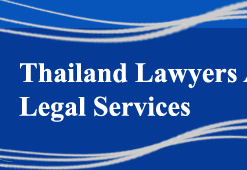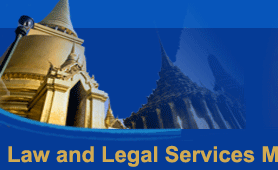



    |
|
| |
|
Framework Agreement on the ASEAN Investment Area (AIA)
Dr. Lawan Thanadsillapakul*
Background and Nature of the Agreement
The Framework Agreement on the ASEAN Investment Area was signed on 8th October 1998 aiming at the establishment of "the ASEAN Investment Area". This was a result of the decision made in the fifth ASEAN Summit(1), which called for the establishment of a regional investment arrangement to enhance the attractiveness of the region for direct investment flows. The establishment of AIA also pursues the objective of the Framework Agreement on Enhancing ASEAN Economic Co-operation or it is known as the Agreement on ASEAN Free Trade Area signed in Singapore on 28th January 1992(2).
The objective(3) of the Framework Agreement on AIA is to establish a competitive ASEAN Investment Area in order to "attract greater and sustainable levels of FDI into the region and to realise substantially increasing flows of FDI from both ASEAN and non-ASEAN sources by making ASEAN an attractive, competitive, open and liberal investment area"(4). The agreement binds the member countries to "progressively reduce or eliminate investment regulations and conditions, which may impede investment flows and the operation of investment projects in ASEAN"(5) and to ensure the implementation of AIA within the agreed time frame. The agreement on AIA provided three pillars of broad-based programs for encouraging investment in the ASEAN region:
co-operation and facilitation; promotion and awareness; liberalisation(6). The First Two Pillars: Co-operation and Facilitation, and Promotion and Awareness
The ASEAN Plan of Action on Co-operation and Promotion of Foreign Direct Investment and Intra-ASEAN Investment was initially endorsed at the fifth ASEAN Summit in Bangkok 1995 when the decision to establish AIA was adopted. It was further elaborated by the AHIA Meeting in July 1998. The plan of action contains various measures for investment facilitation and promotion. They include joint promotional seminars and activities to attract foreign direct investment; joint promotion to attract FDI in higher technological-based industries and high value-added activities; joint publications on investment regulations, policies, procedures and opportunities to further enhance the transparency of ASEAN's investment regime; simplification of ASEAN countries' investment procedures; joint training programs for ASEAN's investment officials on investment promotion; and closer co-operation among ASEAN investment agencies through exchange of investment data and information; and updates on any policy changes. ASEAN Investment co-operation work programs(7) will help to implement the ASEAN Plan of Action on Co-operation and Promotion of Foreign Direct Investment and intra-ASEAN Investment. Among these work programs are the linking of ASEAN member countries' homepages to the ASEANWEB; joint promotion events within and outside ASEAN, and human resource development. The Taskforce on the collection and reporting of FDI statistics was set up by the AHIA, to provide a comparable approach to measuring, collecting and reporting of FDI statistics for monitoring the progress and development of the ASEAN Investment Area. The Work Programs also include a compilation of measures taken and incentives provided by member countries in promoting FDI that will be published to assist the private sectors in their investment decision-making processes. In conjunction with the signing of the Framework Agreement on AIA and to facilitate FDI flows into the region, the AHIA agreed that three major projects be launched(8):
The work programs include, among others, joint training programs, high level strategic planning meeting, a protocol to amend the ASEAN Agreement for the promotion and Protection of Investment(10), and a comprehensive survey on the promotion of FDI into and within ASEAN. Furthermore, it established the ASEANWEB, which links the websites among its member countries' investment networks, to provide investment information in order to enhance the transparency of ASEAN investment regime and for better access to investment information for investors. This helps investors gain access to the overall investment policies in ASEAN countries to facilitate their decision-making in investment. The AHIA convened a conference, where the ministers of ASEAN countries met up with world corporate leaders to encourage private sector companies to meet, interact, and to explore the opportunities present in the region(11). It was also agreed that individual ASEAN countries should also consult the private sectors in their respective countries on what specific measures could be adopted to improve the investment climate. In this connection, they urged the private sectors to participate actively in these consultations(12).
_______________________________________________________________
* Assistant Professor, Dr., School of Law, STOU. She holds LL.B and LL.M. (Thammasat University, Thailand), LL.M. (Vrije Universiteit Brussels, Belgium), and Ph.D. (Lancaster University, UK)
(1) The fifth ASEAN Summit was held in December 1995, in Bangkok, Thailand.
(2) The preamble of Framework Agreement on AIA reaffirms the importance of sustaining economic growth and development in all member states through joint efforts in liberalizing trade and promoting intra-ASEAN trade an investment flows enshrined in the Framework Agreement on Enhancing ASEAN Economic Co-operation.
(3) Art. 3: Objectives of the Framework Agreement on the ASEAN Investment Area.
(4) Joint Press Release, Inaugural Meeting of the ASEAN Investment Area (AIA) Council, 8th October 1998, Manila, the Philippines.
(5) Art. 3 (iv) of the Framework Agreement on the ASEAN Investment Area.
(6) This results from the Meeting of the 4th ASEAN Heads of Investment Agencies, 24th July 1998, Singapore, Joint Press Statement. paragraph 6. They are incorporated in the Framework Agreement on AIA Art. 6 (1) (a), (b), (c).
(7) This results from the Meeting of the Fourth ASEAN Heads of Investment Agencies, 24th July 1998, Singapore, Joint Press Statement. Paragraph 8.
(8) Joint Press Statement, Meeting of the Fourth ASEAN Heads of Investment Agencies, 24th July 1998, Singapore.
(9) The ASEAN Supporting Industry Database will assist ASEAN investors seeking to source parts, components or raw materials from ASEAN rather than importing such products from outside the region, thereby enhancing ASEAN's industrial linkage.
(10) The revised Protocol includes of provisions on transparency and predictability, the simplification of investment procedures and approval process, a dispute settlement mechanism, and accession of new members. The agreement is aimed at increasing the confidence of investors to invest in the ASEAN region.
(11) Decision made by the ASEAN Heads of Investment Agencies Meeting, Manila, Philippines, 3rd-4th July 1997. The conference took place in conjunction with the 30th ASEAN Anniversary in 1998.
(12) This resulted from the Meeting of the forth ASEAN Heads of Investment Agencies, 24th July 1998, Singapore.